Are
mangroves in the tropical Atlantic ripe for invasion? Exotic mangrove trees in
the forests of south Florida
Authors: JW
Fourqurean, TJ Smith III, J Possley, TM Collins, D Lee and S Namoff
DOI:
10.1007/s10530-009-9660-8
See the paper at the journal
Biologial Invasions's website, or email
JW Fourqurean for a reprint
Abstract of the paper:
Two species of
mangrove trees of Indo-Pacific origin have naturalized in tropical Atlantic
mangrove forests in south Florida after they were planted and nurtured in
botanic gardens. Two Bruguiera gymnorrhiza trees that were planted in the
intertidal zone in 1940 have given rise to a population of at least 86 trees
growing interspersed with native mangrove species Rhizophora mangle,
Avicennia germinans and Laguncularia racemosa along 100m of
shoreline; the population is expanding at a rate of 5.6% y-1. Molecular genetic
analyses confirm very low genetic diversity, as expected from a population
founded by two individuals. The maximum number of alleles at any locus was
three, and we measured reduced heterozygosity compared to native-range
populations. Lumnitzera racemosa was introduced multiple times during the
1960ís and 1970ís, it has spread rapidly into a forest composed of native R.
mangle, A. germinans, Laguncluaria racemosa and Conocarpus
erectus and now occupies 60,500 m2 of mangrove forest with stem densities of
24,735 Ha-1. We estimate the population growth rate of Lumnitzera racemosa to be
between 17 and 23% y-1. Populations of both species of naturalized mangroves are
dominated by young individuals. Given the long life and water-dispersed nature
of propagules of the two exotic species, it is likely that they have spread
beyond our survey area. We argue that the species-depauperate nature of tropical
Atlantic mangrove forests and close taxonomic relatives in the more species-rich
Indo-Pacific region result in the susceptibility of tropical Atlantic mangrove
forests to invasion by Indo-Pacific mangrove species.
Bruguiera gymnorrhiza at
The Kampong of the
National Tropical Botanic Garden
| A small specimen of Bruguiera gymnorrhiza with unopened red
flower buds
Photo credit: David Lee |
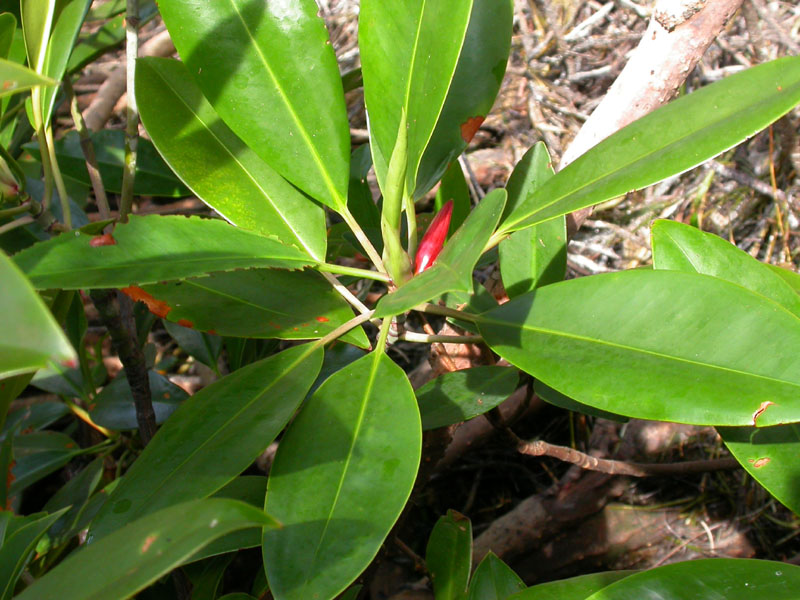 |
| A comparison of the leaves of the native Rhizophora mangle
(top) and the exotic Bruguiera gymnorrhiza (bottom). Note
the more elongated shape of the exotic, the more pointed leaf tips, and
the longitudinal folds running parallel to the midrib of the exotic
leaf.
Photo credit: Jim Fourqurean |
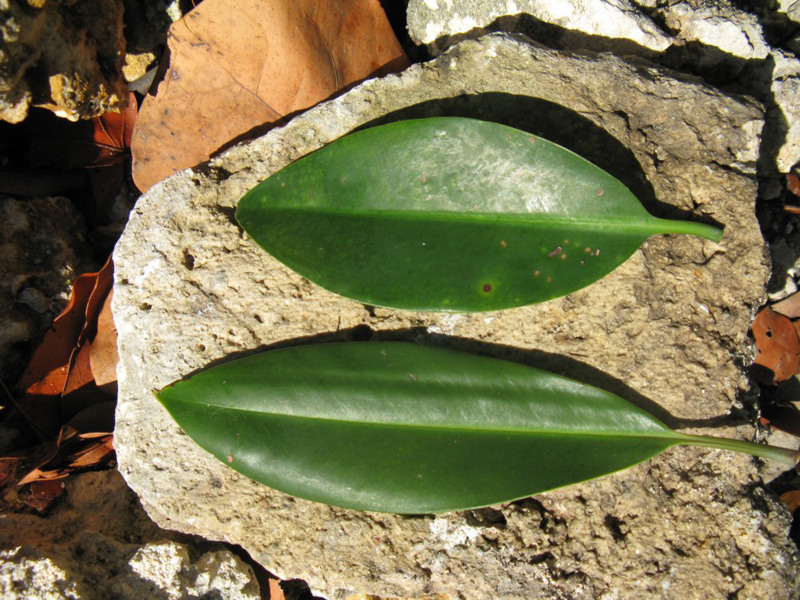 |
| A Bruguiera gymnorrhiza sapling growing in the understorey of
the mangrove forest. Note the substantial herbivory on the leaves.
Photo credit: Jim Fourqurean |
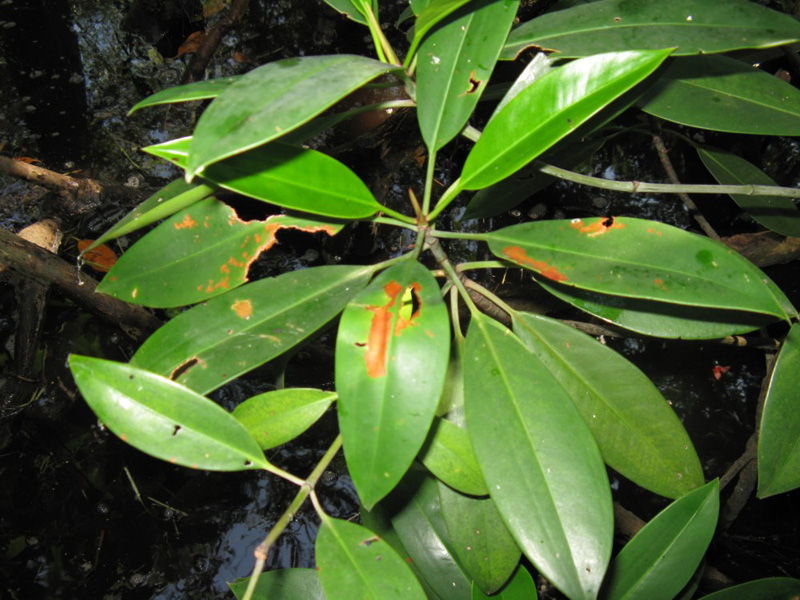 |
| A small branch from a small Bruguiera gymnorrhiza tree in the
understorey. Note the pronounced points on the leaves compared to
the native Rhizophora mangle
Photo credit: Jenn Possley |
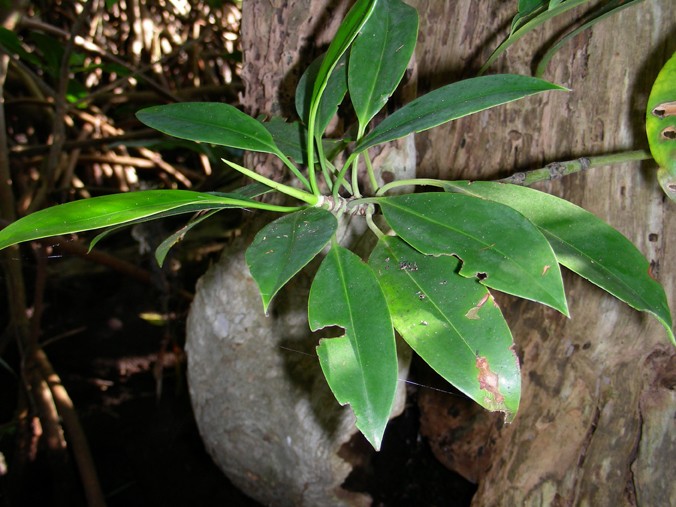 |
| Note the density of saplings and small trees of Bruguiera
gymnorrhiza (marked with orange flagging tape) in the understorey of
native Avicennia germinans and Rhizophora mangle.
Photo credit: Jim Fourqurean |
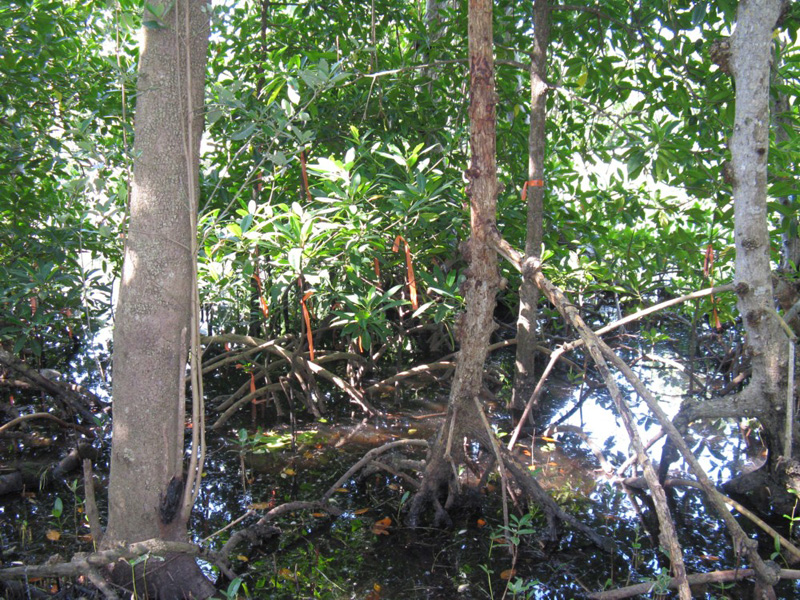 |
| Base of the trunk of the largest specimen (ca. 15 cm DBH) of
Bruguiera gymnorrhiza at the Kampong. Note the beginning of
buttress roots and lack of prop roots compared to Rhizophora mangle.
Photo credit: Jim Fourqurean |
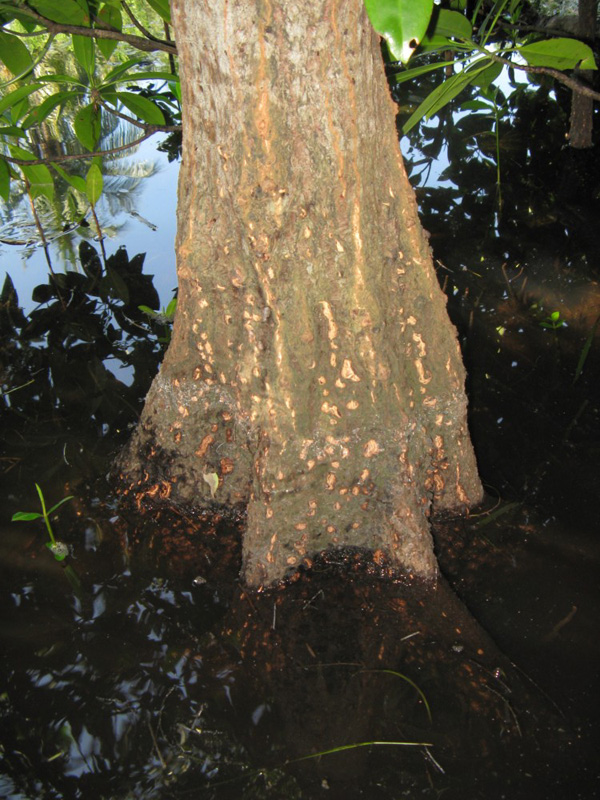 |
| A closer view of the base of the trunk of a medium-sized
Bruguiera gymnorrhiza. Note color and texture of bark.
Photo credit: Jenn Possley |
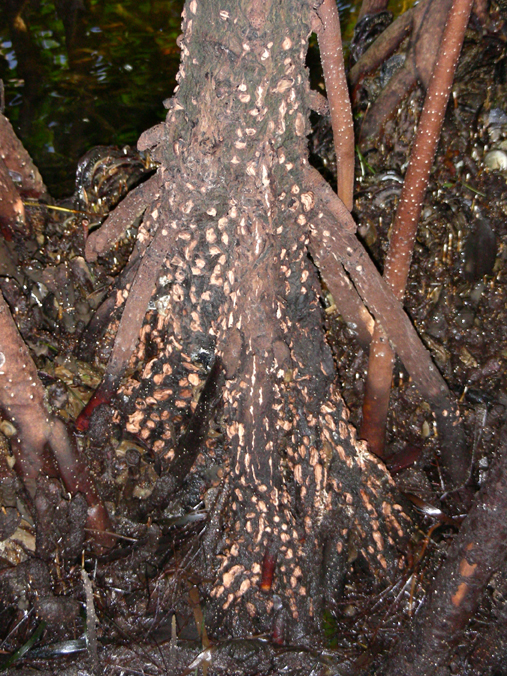 |
| Unopened flower buds on Bruguiera gymnorrhiza.
Photo credit: David Lee |
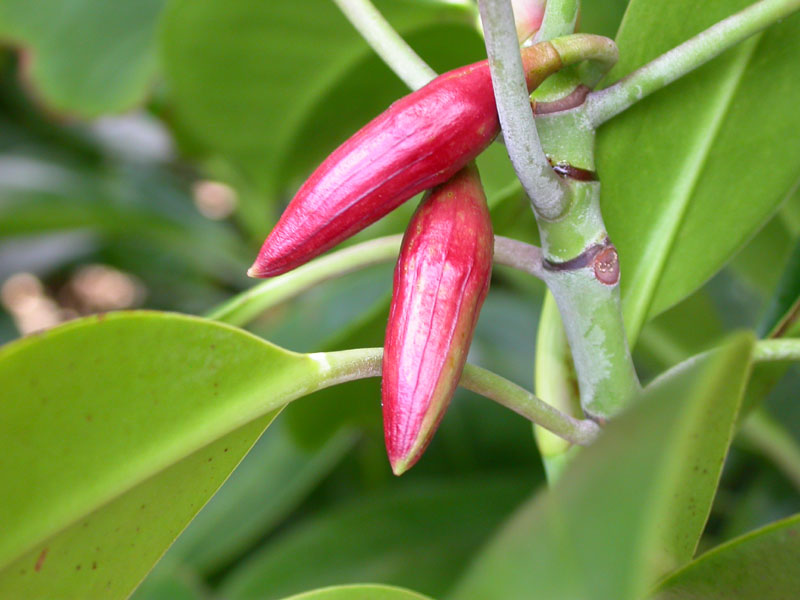 |
| Partially opened flower on Bruguiera gymnorrhiza.
Photo credit: David Lee |
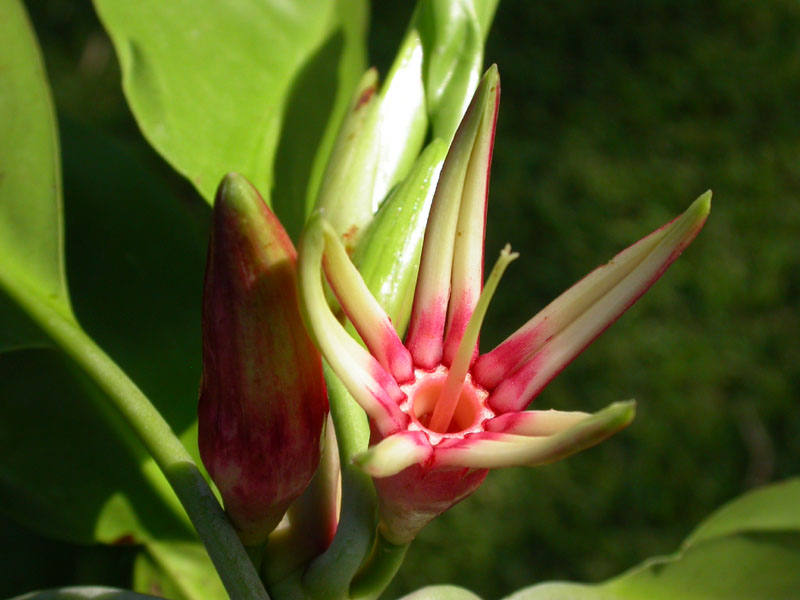 |
| Fully opened flower on Bruguiera gymnorrhiza.
Photo credit: David Lee |
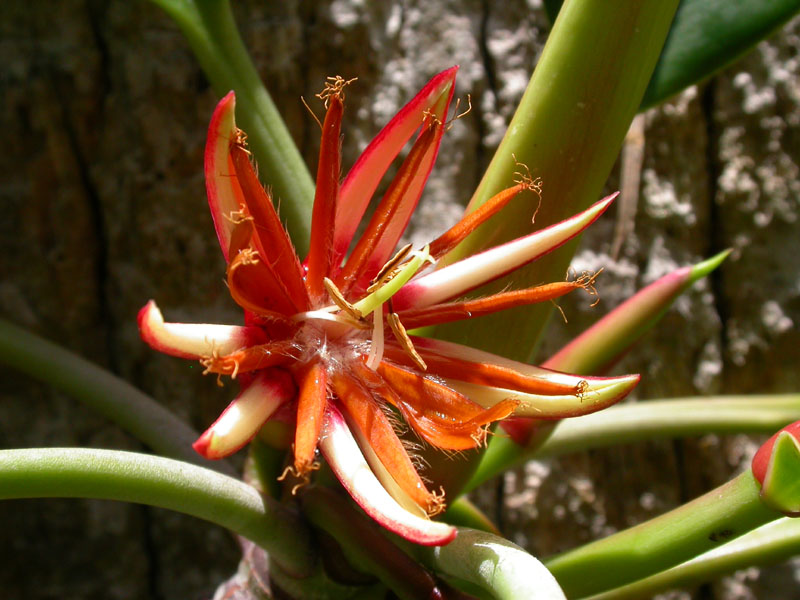 |
| Recently uprooted propagule of Bruguiera gymnorrhiza.
Note the similar appearance to the propagules of the native
Rhizophora mangle. The exotic propagules have a slightly hexagonal
cross section compared to the natives- note longitudinal ridge along the
hypocotyl.
Photo credit: Jim Fourqurean |
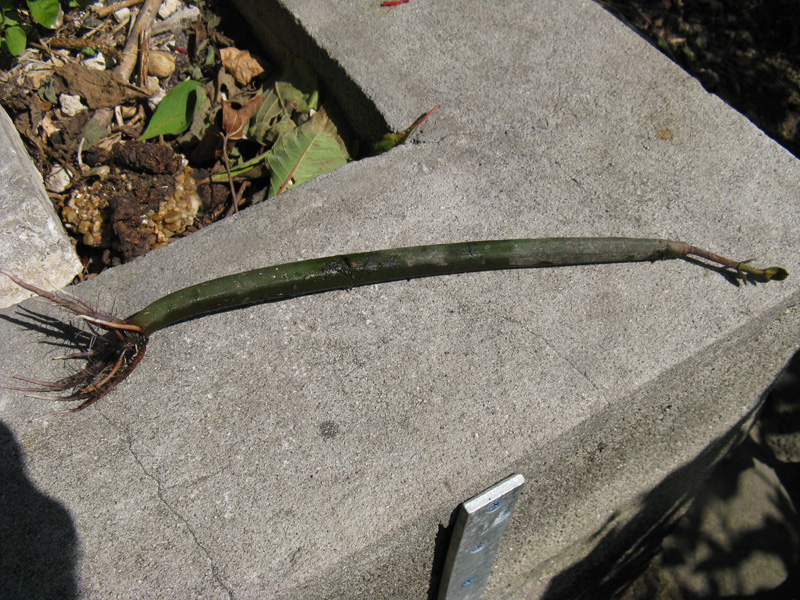 |
| Recently uprooted propagule of Bruguiera gymnorrhiza, for
scale.
Photo credit: Jim Fourqurean |
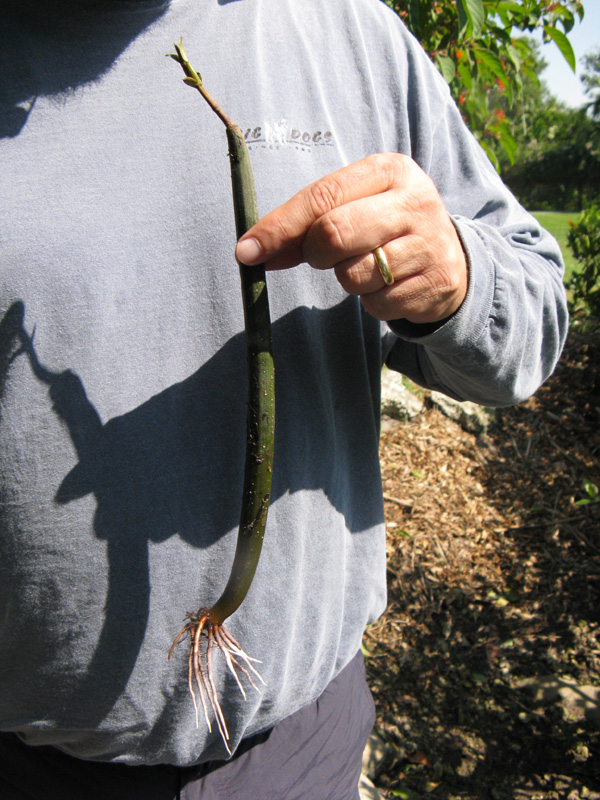 |
Lumnitzera racemosa growing at
Fairchild Tropical Botanic Garden
and Matheson
Hammock county park.
| A small Lumnitzera racemosa tree growing amongst dwarf native
Rhizophora mangle in Matheson Hammock park.
Photo credit: Jenn Possley |
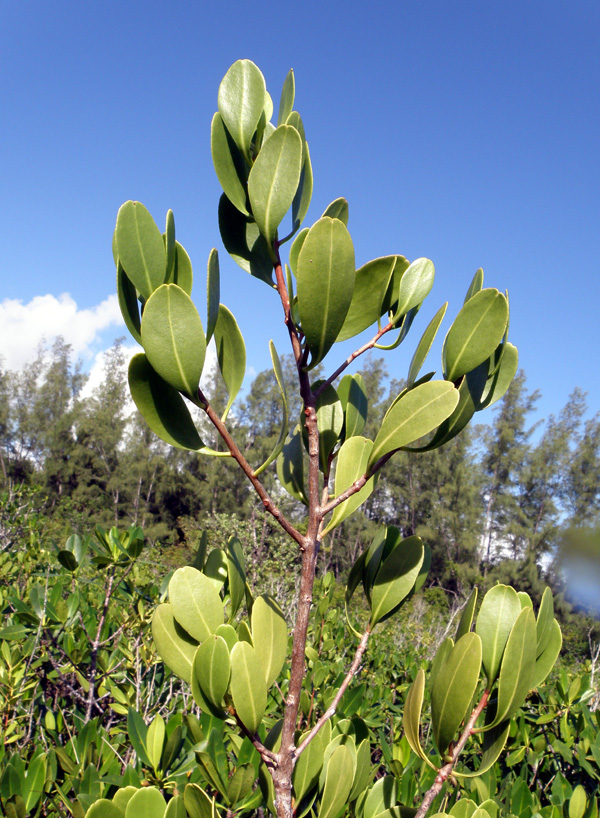 |
| Many small Lumnitzera racemosa trees growing amongst dwarf
native Rhizophora mangle in Matheson Hammock park.
Photo credit: Jenn Possley |
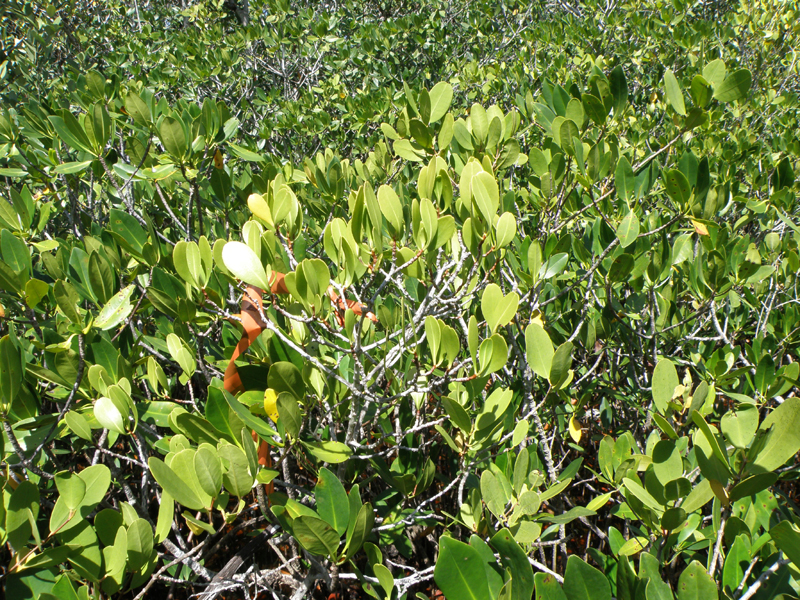 |
| Close up of a stem of Lumnitzera racemosa, showing an open
flower and young fruit. Note leaf shape and indentation on distal end of
leaf. Photo credit: Jenn Possley |
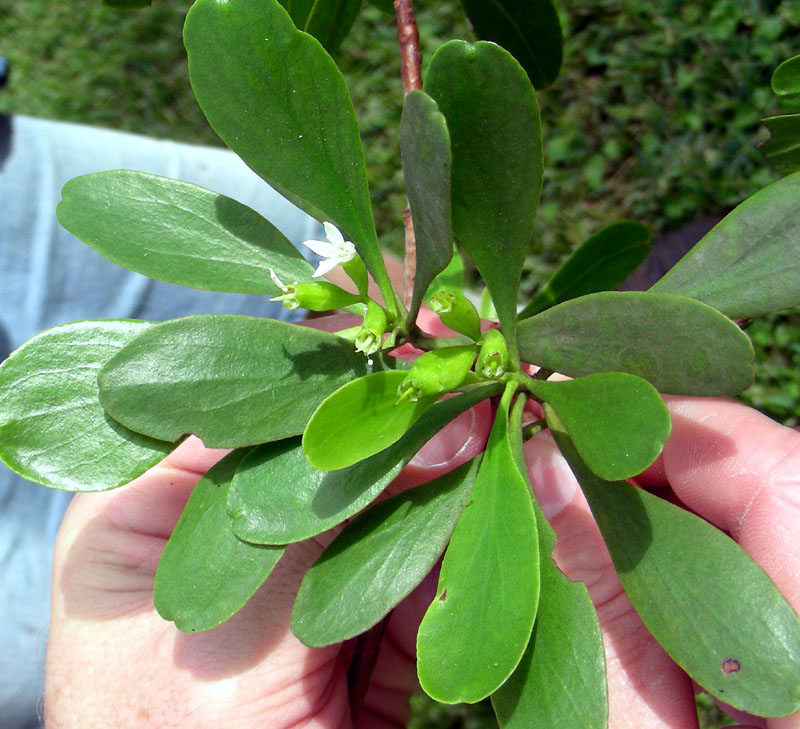 |
| Close up of a stem of Lumnitzera racemosa, showing fruits.
Note venation pattern in leaves.
Photo credit: Jim Fourqurean |
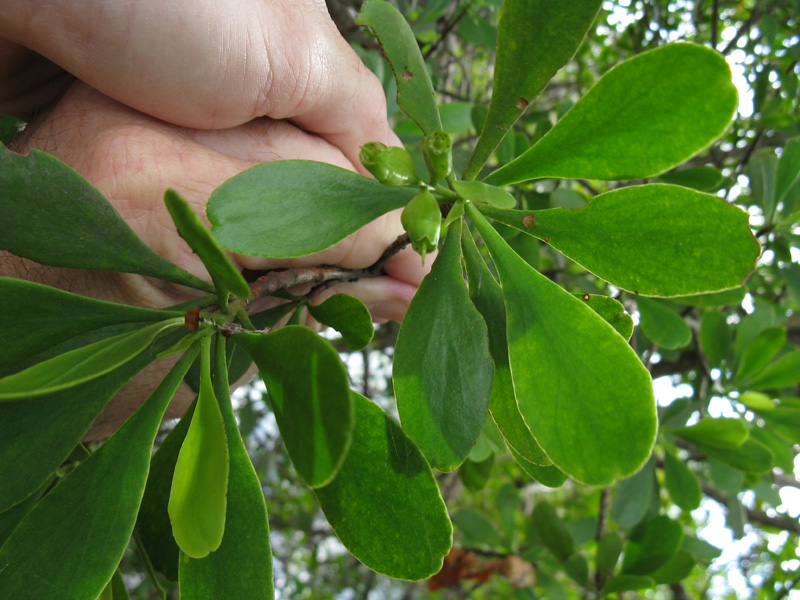 |
| Newly germinated Lumnitzera racemosa seedling.
Photo credit: Jim Fourqurean |
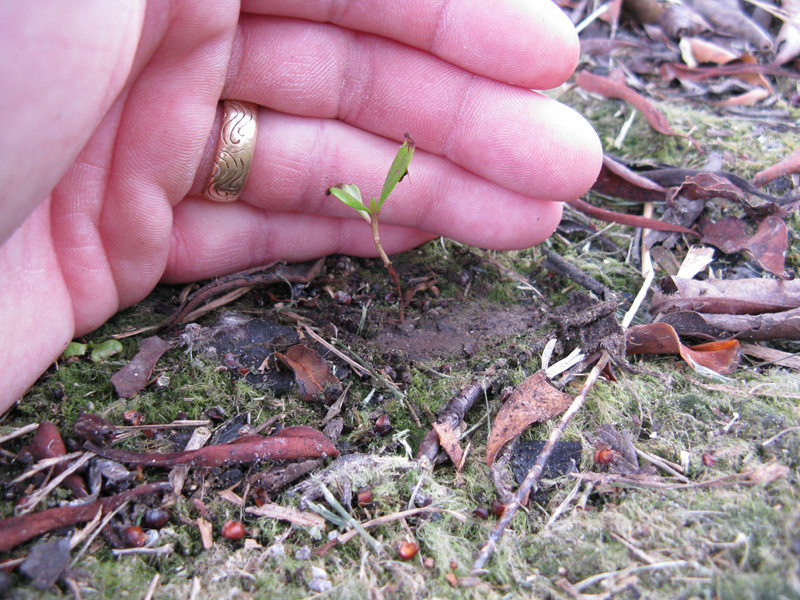 |
| Many Lumnitzera racemosa seedlings on the shore of a
freshwater pond at Fairchild Tropical Botanic Garden.
Photo credit: Jim Fourqurean |
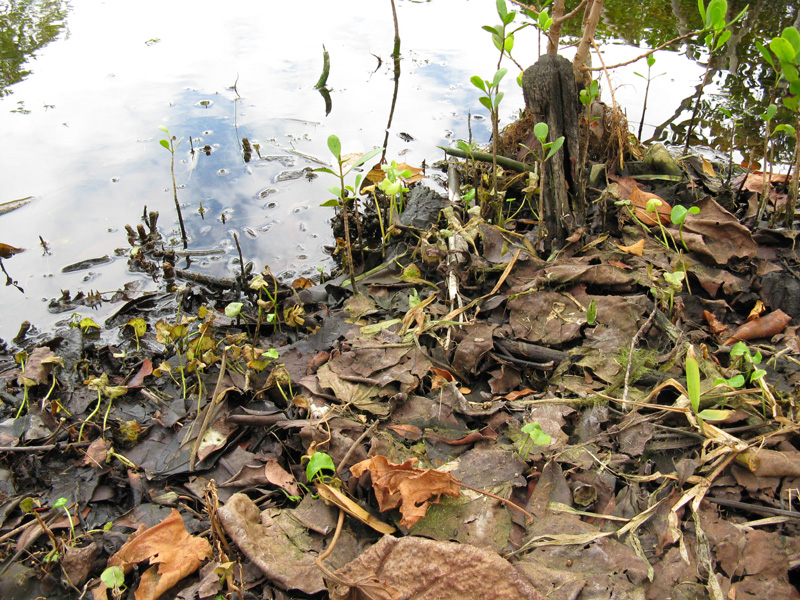 |
| Many Lumnitzera racemosa seedlings among the dwarf native
Rhizophora mangle at Matheson Hammock.
Photo credit: Jenn Possley |
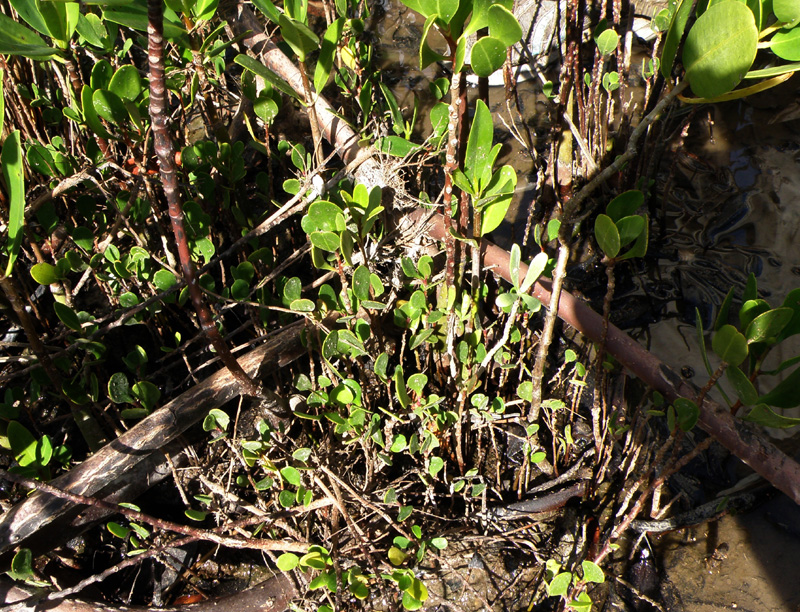 |
| Saplings of Lumnitzera racemosa.
Photo credit: Jim Fourqurean |
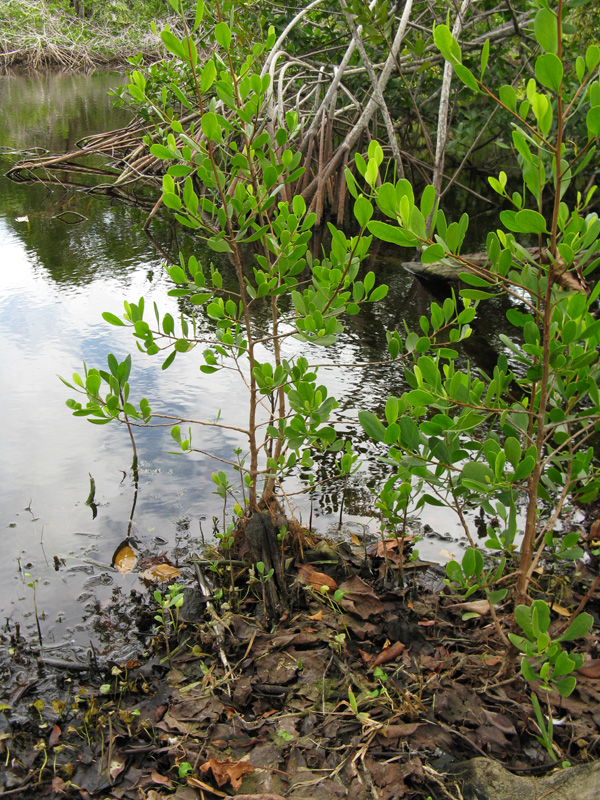 |
| A large specimen of Lumnitzera racemosa (between Jenn Possley
on left, David Lee on right) in Fairchild Tropical Botanic Garden
Photo credit: Jim Fourqurean |
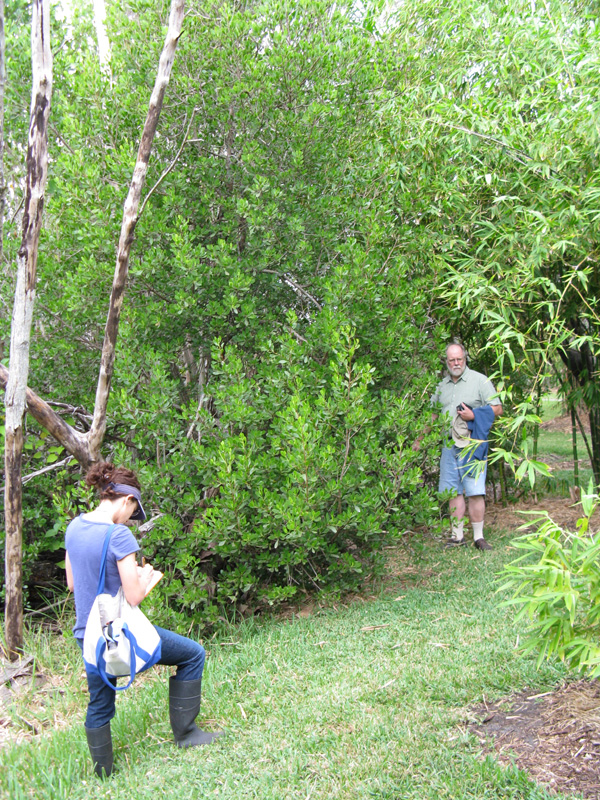 |




















